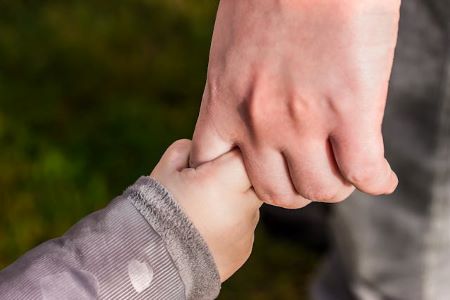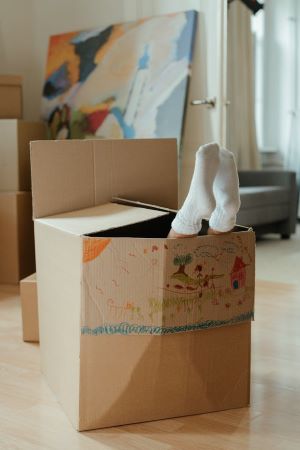The concept of the inner child is only part of the healing journey, and it’s possible that we may meet ourselves at several moments in our journey, with different aspects of the fragmented self waiting to have their moment and rejoin the rest of us.

If you’re reading this and thinking, ‘Goodness me, that sounds like a nightmare if I am to rejoin all the fragmented parts of myself and specific moments of trauma,’ all I can say is that we are fortunate in that memories are often representative. We are not required to visit every moment a teacher humiliated us or gave us corporal punishment. Instead, there is usually one ‘specific’ or ‘cluster’ memory that emerges, enabling us to engage with and process the related emotions to this trauma. I think our makeup as human beings is wonderful in this regard. For myself, I needed only to revisit a moment that represented rejection or criticism to be able to process that stuck ‘internally labelling’ moment in my life, which had led to decades of people-pleasing and self-sacrificing in search of affirmation and acceptance.
One of the hindrances to such a healing journey is the lens through which we view our pasts. Usually, we do so from a safe distance and in a way that retains our separation at an emotional level. We have multiple coping mechanisms at play to keep ‘that stuff’ in the past where it belongs—coping mechanisms that got us here but also perpetuate our leaving a part of ourselves stuck in the past, waiting for reconnection.
One coping mechanism we employ is intellectualising the past, visiting it cerebrally, not emotionally.
I remember being asked about where I had witnessed my parents in conflict as a child and how, as a child, I may have experienced it. The memory had become an interesting story I could disclose to people if we were talking about our childhoods. I began to tell the counsellor how my mum and dad were having a ‘raised voice push and pull’ physical tussle in the middle of the living room, my father’s 6’ tall head banging on the lampshade above. The counsellor asked how old I was, and I replied, ‘probably around 12’. She asked what happened, and I began to tell how I got pepper from the kitchen and, standing taller than them atop the sofa, I began to shake the pepper onto my parents’ heads. The counsellor asked, ‘And why did you shake pepper on their heads?’ I began, ‘Well, I used to see Mum do it to the dog. If it stole food or a loaf of bread, she would put pepper on his nose to get him to release it’.

The counsellor went on to explain how it’s normal for people to ‘intellectualise’ their past experiences, to look back at them from the understanding and the experience (safe distance) of the adult we are now. She continued, ‘But why was Garry, aged 12, shaking pepper on his parents’ heads?’ And boom, there it was, complete with snot, sobs, and tears, I replied, ‘Because I didn’t want my dad to kill Mum!’ And so the journey back, to gather our self, or our ‘mini me’ back to ourselves, does have some challenges, but it’s ok. You are no longer a child; you are an adult, able to give time and space for your inner child, stuck in time, to have their moment, to be seen, to be made visible, to be heard, and to have time to express what needs to be expressed so that finally, they can leave it there, processed through and completed.
It is not just a case of having an opportunity to defragment and gather ourselves back to ourselves from wherever aspects of the self have been left behind. It’s also a model for ‘adulting’, for how to deal with more recent conflicts and things which trigger deep feelings of fear, rejection, loss, etc. It raises the question of whether, as adults, we can continue to re-fragment if we retain old coping mechanisms of detaching, burying, and compartmentalising instead of facing and processing. As I pointed out to one client recently, ‘Where do you think the stuff is that you put in those compartments?’
Such a journey of reconnection can begin when our childhood coping mechanisms, carried through into adulthood, slowly begin to fail us, and we have to sit with our unconsciously avoided feelings and allow them to express themselves. It is also the case that as we do reconnect, the work is not finished because we are now in a place of greater freedom to look at the behaviours and beliefs that were adopted as a result of unfinished childhood trauma.
Often these things have made our world smaller and unsafe instead of ever-growing with exploration.
My comment to clients in this context is that you are now more likely to be the driver in your body, rather than the passenger of its unresolved trauma and related feelings.
My understanding of such things is still evolving, and I continue to have questions about inner child work. The healing of trauma and reconciling with the self that was present in those childhood experiences should mean the healing of the trauma, with the recognition that our nervous system is going to experience triggers, somewhat like muscle memory, because our whole self has remained postured, ready to self-protect. Trauma is not intended to remain an open wound, and it’s my perception that our left-behind child self is not to remain there as a child where we might reference that ‘my inner child is feeling triggered’ when in fact it is your adult self and our conditioned nervous system’s memory, which remains in ongoing recovery.

I am not especially a fan of the idea that we have small child ‘selves’ in a box, which we can bring out from time to time to explain why we are not feeling good. I much prefer the reconciling nature of our left-behind child selves being able to rejoin our adult self in the present so that we are both more complete and more present.
I believe the therapist is not the healer, they are an enabler, a host, a witness to the client healing themselves.
Main – Photo by Hans-Peter Gauster on Unsplash


